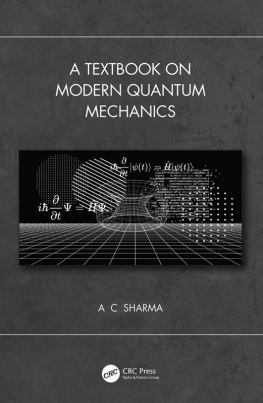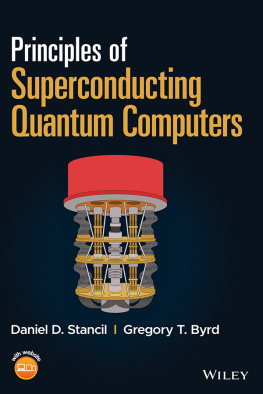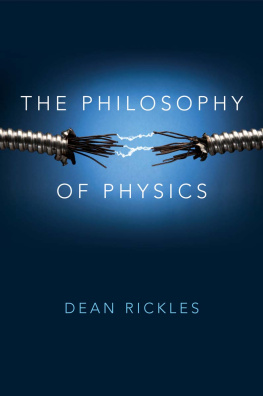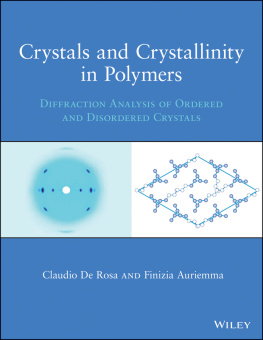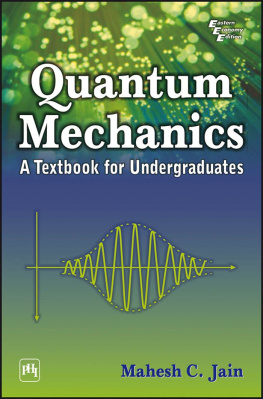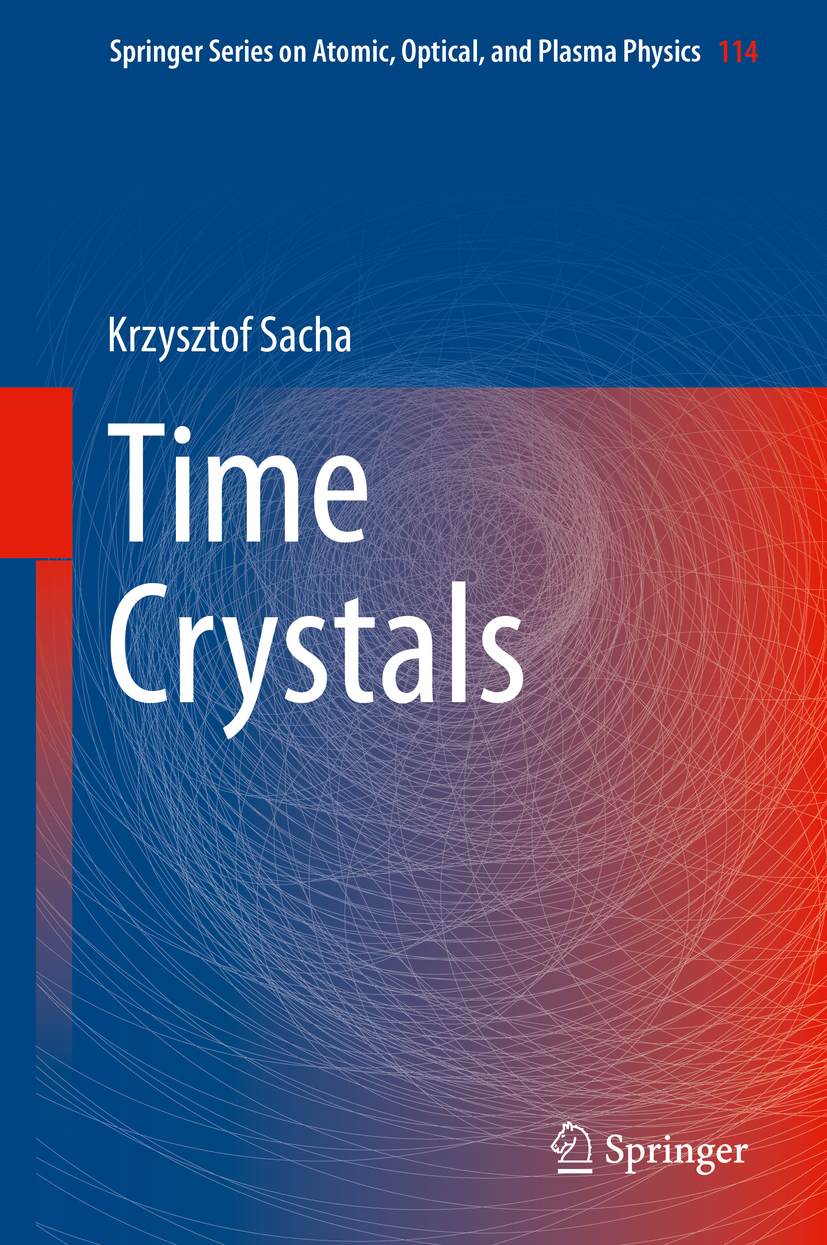Volume 114
Springer Series on Atomic, Optical, and Plasma Physics
Editor-in-Chief
Gordon W. F. Drake
Department of Physics, University of Windsor, Windsor, ON, Canada
Series Editors
James Babb
Harvard-Smithsonian Center for Astrophysics, Cambridge, MA, USA
Andre D. Bandrauk
Facult des Sciences, Universit de Sherbrooke, Sherbrooke, QC, Canada
Klaus Bartschat
Department of Physics and Astronomy, Drake University, Des Moines, IA, USA
Charles J. Joachain
Faculty of Science, Universit Libre Bruxelles, Bruxelles, Belgium
Michael Keidar
School of Engineering and Applied Science, George Washington University, Washington, DC, USA
Peter Lambropoulos
FORTH, University of Crete, Iraklion, Crete, Greece
Gerd Leuchs
Institut fr Theoretische Physik I, Universitt Erlangen-Nrnberg, Erlangen, Germany
Alexander Velikovich
Plasma Physics Division, United States Naval Research Laboratory, Washington, DC, USA
The Springer Series on Atomic, Optical, and Plasma Physics covers in a comprehensive manner theory and experiment in the entire field of atoms and molecules and their interaction with electromagnetic radiation. Books in the series provide a rich source of new ideas and techniques with wide applications in fields such as chemistry, materials science, astrophysics, surface science, plasma technology, advanced optics, aeronomy, and engineering. Laser physics is a particular connecting theme that has provided much of the continuing impetus for new developments in the field, such as quantum computation and Bose-Einstein condensation. The purpose of the series is to cover the gap between standard undergraduate textbooks and the research literature with emphasis on the fundamental ideas, methods, techniques, and results in the field.
More information about this series at http://www.springer.com/series/411
Krzysztof Sacha
Time Crystals
1st ed. 2020
Krzysztof Sacha
Jagiellonian University in Krakow, Krakow, Poland
ISSN 1615-5653 e-ISSN 2197-6791
Springer Series on Atomic, Optical, and Plasma Physics
ISBN 978-3-030-52522-4 e-ISBN 978-3-030-52523-1
https://doi.org/10.1007/978-3-030-52523-1
Springer Nature Switzerland AG 2020
This work is subject to copyright. All rights are reserved by the Publisher, whether the whole or part of the material is concerned, specifically the rights of translation, reprinting, reuse of illustrations, recitation, broadcasting, reproduction on microfilms or in any other physical way, and transmission or information storage and retrieval, electronic adaptation, computer software, or by similar or dissimilar methodology now known or hereafter developed.
The use of general descriptive names, registered names, trademarks, service marks, etc. in this publication does not imply, even in the absence of a specific statement, that such names are exempt from the relevant protective laws and regulations and therefore free for general use.
The publisher, the authors and the editors are safe to assume that the advice and information in this book are believed to be true and accurate at the date of publication. Neither the publisher nor the authors or the editors give a warranty, expressed or implied, with respect to the material contained herein or for any errors or omissions that may have been made. The publisher remains neutral with regard to jurisdictional claims in published maps and institutional affiliations.
This Springer imprint is published by the registered company Springer Nature Switzerland AG
The registered company address is: Gewerbestrasse 11, 6330 Cham, Switzerland
To Ewa, Ola, and Wojciech
Preface
What are time crystals? I have been asked this question many times. Even if I did my best to explain the phenomena related to the time crystal research, there were further questions. Where can we read about them? Original scientific publications and even review articles are often written for specialists, is there a book on that subject? It was the main motivation why I decided to write this monograph.
The field of time crystals, despite being in its infancy, is developing quite rapidly and it is impossible to describe all interesting results related to the time crystal area. If I tried to do so, I would never finish writing this book. I have made a selection and the selection is obviously subjective. I concentrate on quantum aspects of time crystals and try to describe how the research initiated by the seminal articles by Alfred Shapere and Frank Wilczek is developing and in which directions.
Basic knowledge of the reader on quantum mechanics is assumed. If I feel, subjectively, that certain formalism which I have to use is more advanced or a considered problem needs an introduction, background information is provided. I am aware that this monograph is far from being perfect and try to excuse myself by saying that the primary purpose of the book is to support the field in its infancy and to introduce researchers, especially young scientists, to the new ideas: the ideas where the time dimension is as good to host crystalline structures as the space dimensions do.
Krzysztof Sacha
Krakw, Poland
March 2020
Acknowledgements
I am deeply grateful to: Bryan Dalton, Alexandre Dauphin, Dominique Delande, Krzysztof Giergiel, Weronika Golletz, Peter Hannaford, Arkadiusz Kosior, Arkadiusz Kuro, Maciej Lewenstein, Pawe Matus, Bruno Mera, Marcin Mierzejewski, Florian Mintert, Artur Miroszewski, Luis Morales-Molina, Rick Mukherjee, Yasser Omar, Frederic Sauvage, Andrzej Syrwid, Jia Wang, and Jakub Zakrzewski for the collaboration on the time crystal research. It was my great pleasure.
I would also like to thank Jakub Zakrzewski for coming to my office in 2012 with the seminal papers on time crystals by Alfred Shapere and Frank Wilczek and asking for my opinion. It was the key moment when I got attracted to the time crystal problems which I did not have any idea about.
I am extremely grateful to Peter Hannaford for very close and intensive collaboration. His enthusiasm for time crystals and many difficult questions encouraged me to put a lot of effort into the research and allowed me to understand what I was actually doing.
A new research area needs a lot of support; otherwise, it will die out. I thank very much Maciej Lewenstein for his openness to novel ideas and his support of the time crystal field.
I am grateful to Arkadiusz Kosior for the scientific cooperation and for his invaluable help in organizing the workshop on time crystals which brought to Krakw enthusiasts of time crystallization in 2019.
I thank all my students and young collaborators, especially Krzysztof Giergiel without whom the progress of our research on time crystals, if any, would be much slower.
I acknowledge the support of the National Science Centre, Poland via Project No. 2018/31/B/ST2/00349.
Contents



